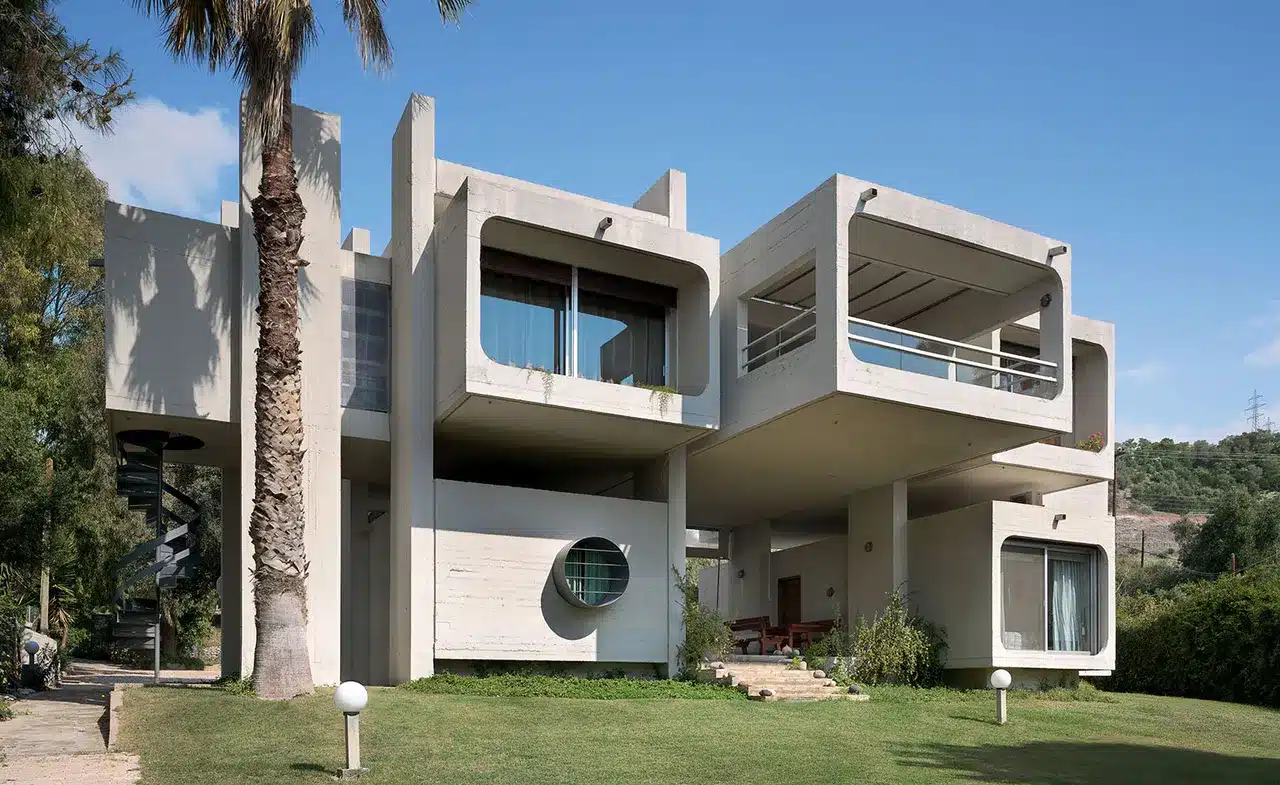Alexandros Tombazis: A Prolific Career in Architecture
Alexandros Tombazis is the leader of a vibrant architectural company in Athens with sixty employees. He oversees approximately twenty projects a year, both conceptual and realized. With more than 800 projects in his portfolio—roughly 300 of which are completed—and at least 110 competition awards, Tombazis is one of Greece’s most well-known and well-respected architects.
Early Life and Influences
Born in India in 1939, Tombazis spent his childhood in various locations including Karachi, Tunbridge Wells, and London before his family settled in Athens. He studied at the Architectural School of the National Technical University of Athens, where he was influenced by significant figures in Greek art and design, such as Nikos Hatzikiriakos-Gikas and Nikos Engonopoulos, during the vibrant era of Greek modernist architecture in the late 1950s and early 1960s. His travels across Europe, witnessing revolutionary buildings like Le Corbusier’s Philips Pavilion, instilled in him a deep commitment to architecture and technology.
Establishing His Practice and Early Innovations
Tombazis was born in India in 1939, and spent his early years in Tunbridge Wells, London, and Karachi before his family relocated to Athens. He attended the Architectural School of the National Technical University of Athens during the height of Greek modernist architecture in the late 1950s and early 1960s, when he was influenced by prominent Greek designers and artists such as Nikos Hatzikiriakos-Gikas and Nikos Engonopoulos. During his travels throughout Europe, he saw innovative buildings such as Le Corbusier’s Philips Pavilion, which sparked his intense interest in technology and architecture.
Shifting to Bioclimatic Design
The 1973 oil crisis caused Tombazis’s work on sustainability and energy efficiency to take a major turn. He pioneered the integration of environmental issues into architecture by adopting bioclimatic design. Helios 1, his first significant bioclimatic project, was a vacation home in the Peloponnese that maximized natural heating and cooling through the use of active solar technology.

Key Projects and Architectural Philosophy
Notable 1970s work by Tombazis include the Dhifros residential block and a concrete office complex for an Athens-based cement firm; both are distinguished by their modular compositions and bare concrete volumes. His commitment to renewable energy was demonstrated in the Lykovrisi Solar Village housing project of the late 1970s, which had 435 affordable units that made use of both active and passive solar technologies.
Evolving Designs and Continued Innovation
Tombazis created Helios 4, a home in the Peloponnese for his daughter, a few years ago. It follows eco-friendly guidelines but has a distinct style thanks to its concrete frame and cascading planted roofs. His philosophy in a customized, site-specific design approach is reflected in this project, which emphasizes the need for every project to begin with a blank canvas.
Broader Contributions and Future Aspirations
In addition to his architectural firm, Tombazis is an honorary fellow of the American Institute of Architects and co-founded the Hellenic Institute of Architecture in 1995. Among his worldwide accomplishments are the designs for the Greek pavilion at Expo 2010 in Shanghai and the Sanctuary of Fátima in Portugal, a major religious project finished in 2007. Tombazis has always been passionate about creative design, and his goal of working on a huge art museum is a reflection of his lifetime commitment to fusing architecture and art.

Photos: Nikolas Koenig
Finally, find out more on ArchUp:







